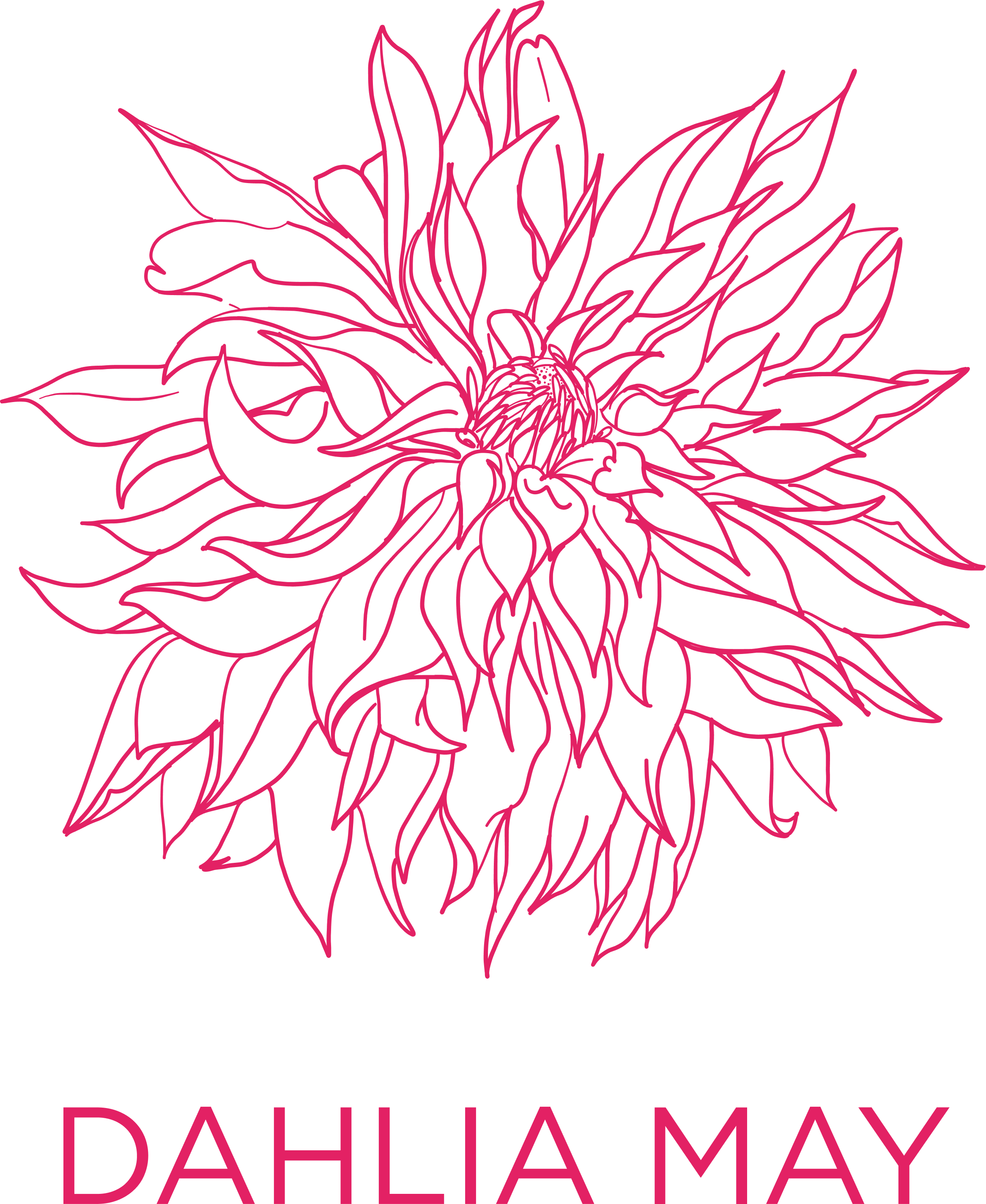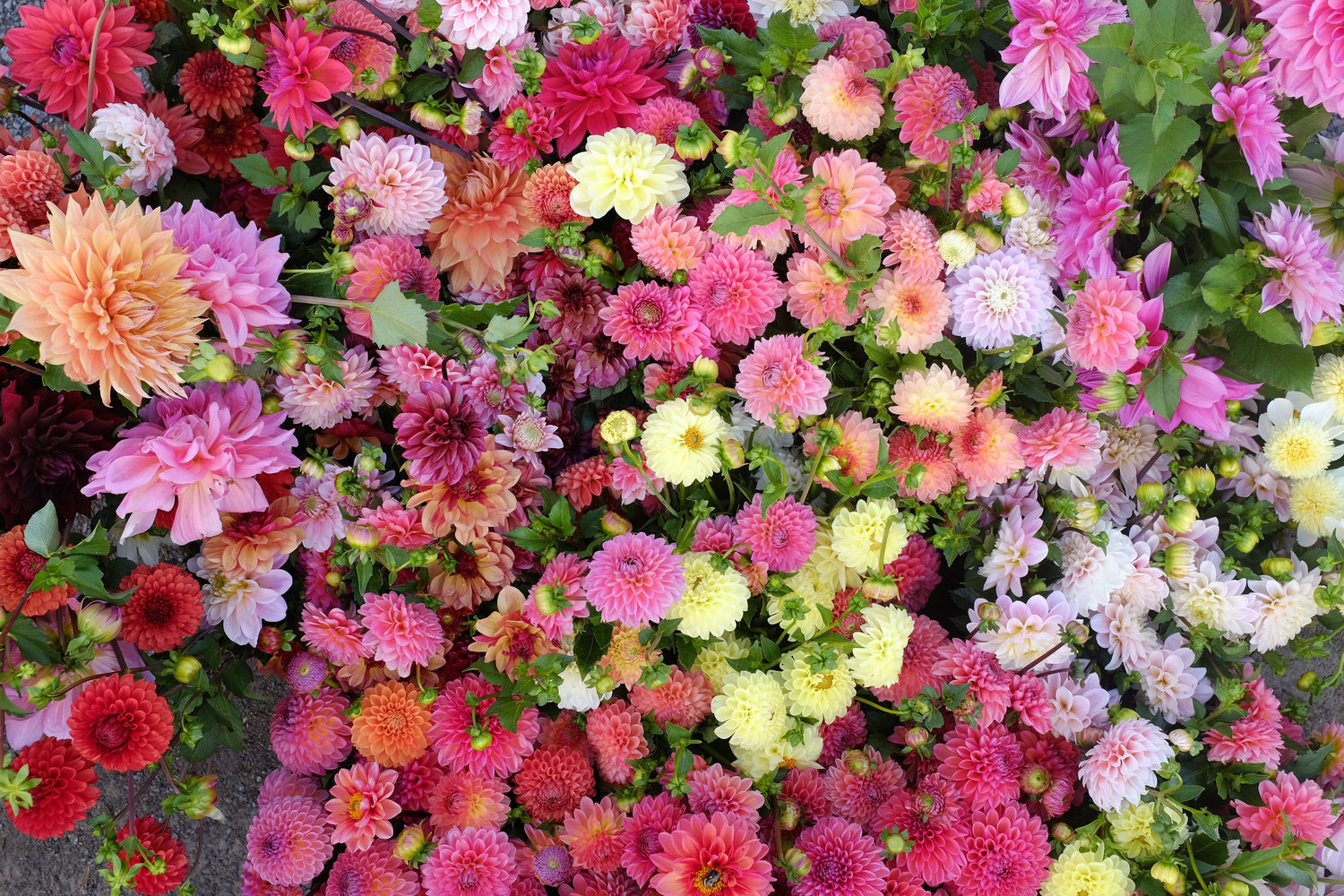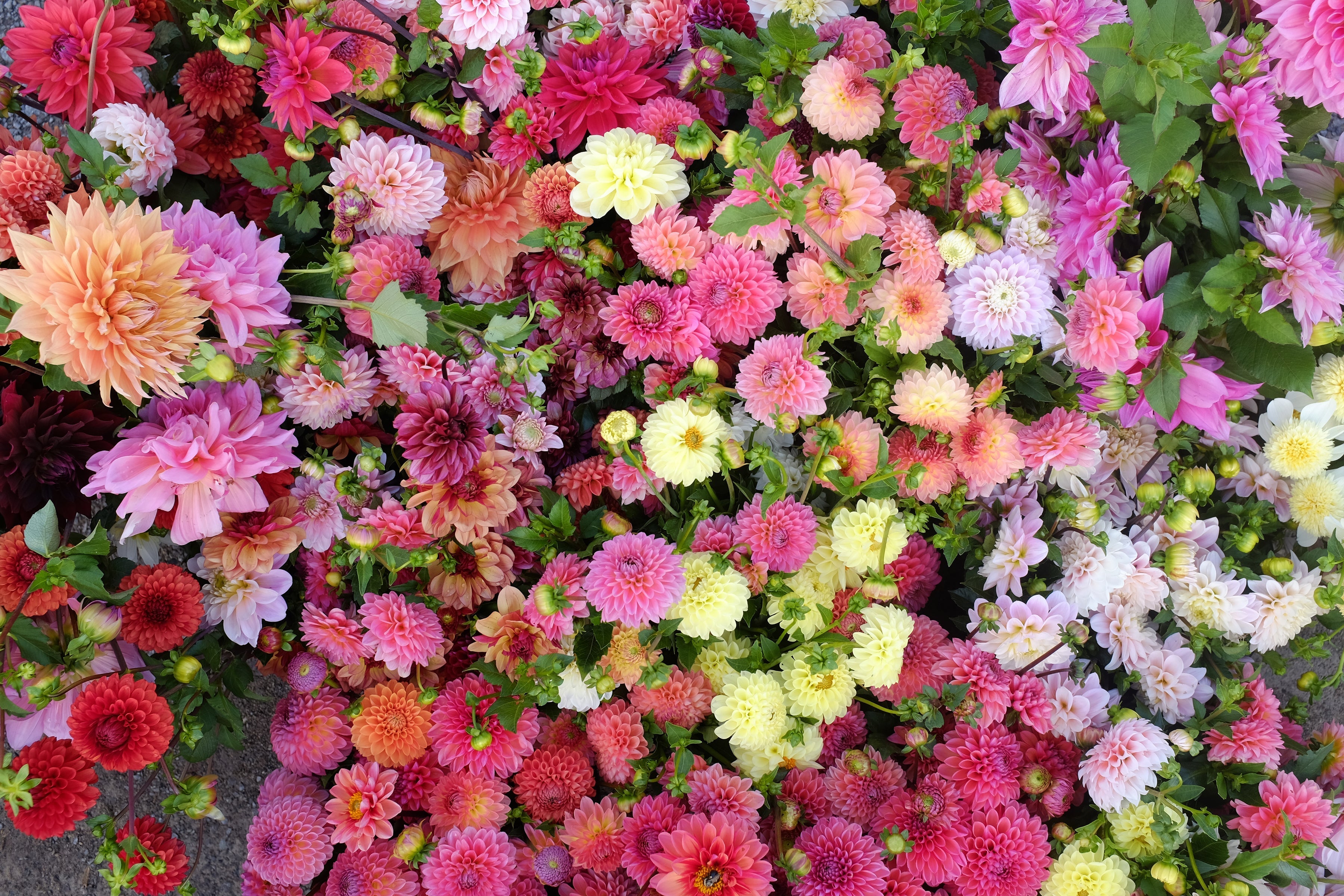How To Grow Dahlias
Dahlias are some of the most beautiful flowers you can grow in your garden, and with a bit of effort, you’ll be rewarded with an abundance of beautiful blooms from August through to your first frost. Perhaps one of the most rewarding aspects of growing dahlias is that for every tuber you plant in the spring, your plant will produce a clump of tubers by the fall, multiplying your tuber stock easily, year after year.
Follow along below, as we walk you through everything you’ll need to know to grow dahlias successfully.

Receiving Your Dahlia Tubers

Open each package of tubers individually, and inspect your tubers.
Our tubers are held in storage at 40F/5C temperatures, so your tuber may still be dormant and not yet have a sprout or visa e ‘eye’ yet when your package arrives. Your tubers should appear firm, and never mushy.
Dahlia tubers come in all different shapes and sizes, and the size of a tuber is not an indication of how it will preform in the garden.

Are Dahlias Annuals, or Perennials?

Dahlias are native to Mexico, and are perennials in their warm native climate. Here in North America, dahlias can be left in the ground over the winter and grown as perennials in gardening zone 8 and up. In the colder gardening zones of 7 and lower, dahlias are annuals, meaning that they will NOT survive the winter in the ground. If you're unsure of your gardening/plant hardiness zone, you can check this map HERE to see what zone you fall into. In zones 7 and lower, you’ll need to dig your dahlia tubers out of the ground in the fall, and store them in above freezing temperatures for the winter.
When to plant your dahlia tubers

Choosing the right time to plant is the key to growing dahlias successfully. After a long dark winter, it’s easy to want to get your hands in the soil and your tubers in the ground as soon as possible, but patience is a virtue in growing dahlias, and early planting is not recommended. Dahlias prefer warm soil, and will NOT tolerate or thrive in cold ground. You’ll want to wait until your soil temperature is at least 60F/15C before planting, and you’ll need to wait until all signs of frost have passed. At our farm in Southern Ontario, we plant our tubers out around the third week of May. A good rule of thumb is to plant your dahlia tubers around the same time that you would plant the tomatoes and peppers in your garden.
You’ll want to watch the weather, when it comes time to plant. If your forecast is suggesting and prolonged periods of wet weather, hold off on planting. Tubers are prone to rot in cold and wet soil.
If you’d like to get a head start, go ahead and plants your tubers in pots inside your house about one month before you would plant them outside.

Soil And Garden Preparation

Dahlias thrive in sunny locations. You’ll want to ensure that the space you’re planting in provides at least 8 hours of sunlight per day. Dahlias are heavy feeders, and grow best in rich, well drained soil, with plenty of organic matter. A ph level of 6-7.5 is recommended. Without good drainage, tubers can be prone to rot. If your soil has a high clay content, or feels particularly heavy, you’ll want to amend it with peat or sand, to allow for extra drainage.
Growing dahlias in pots
Dahlia grow well in pots, and planting in pots is a great choice for folks who are in smaller spaces, or lacking the right spot in the garden. If you’re growing your dahlias in pots, you’ll want to choose a large container, to give your dahlias plenty of room to grow. Each dahlia plant will require at least 12” of space, so choose a container a minimum of 16” wide and equally deep, and be sure not to over-crowd your dahlias. While tubers may look small when planted in pots, remember that they grow into large plants, and they need their space.
Choose a high quality potting mix (not garden soil, container planting requires a lighter mix) for your pots, and be sure to choose a container with good drainage.
Preparing To Plant Your Tubers

Once all signs of frost have passed, and your soil has warmed to at least 60F/15C, your tubers are ready to be planted. Dig a hole 8-10” deep, add in some extra organic matter/compost if you have it, then plant your tubers 4-6” deep.
Plant your tubers horizontally, with the “eyes” planting up, if you can see them.

You’ll want to space ball dahlias 12” apart, and dinner-plate dahlias will require 18” of space each, to allow for plenty of airflow, which prevents issues with mildew later in the season.
If you’re planting your dahlias in rows, we suggest the following spacing:
Single file rows, 8” spacing
Double rows and triple rows, stagger your plants at 10-12” spacing.
Leave at least 3-4’ between rows for walking paths, to allow for the plants to grow and fill in.
Your dahlias will likely require staking as they grow, to support the plants, particularly if you live in an area that receives higher winds. We recommend using tomato cages, or bamboo or metal stakes to support your plants. If you're using stakes, you can run twine between the stakes to corral your plants in, and upright.

Watering Your Dahlias
Once you plant your tubers, you’ll want to wait for the first shoot to emerge before you water. If you’re planting in the garden, there is typically enough residual moisture in the ground to get your tubers growing. If you’re planting in a container, water once when you initially plant, then do not water again until you see your first shoot, to avoid overwatering and causing your tubers to rot. Tubers need a little bit of moisture to begin sprouting, but too much moisture will cause your tubers to rot. Watering always feels like a delicate balance, at this point in the growth process. Different Dahlia varieties take different times to sprout. Early blooming varieties can take as little as two weeks to sprout, while other varieties (including dinner plates) can take anywhere from 4 to 8 weeks to sprout.
Young Dahlia plants don’t require very much water. Once your dahlias are established (and are 8 to 12” tall) , you’ll want to water regularly and deeply. Your dahlias will want to receive at least 1” of water every week, and your plants may require more water in the hot and dry summer months, when they are actively blooming.
Dahlias grown in pots and containers will require more frequent, often daily, watering.
Pinching Your Plants
We recommend “pinching” (removing the top of the central growth tip) of your plant once your plant is 8-10” tall, or has developed 3-4 sets of leaves (count up from the bottom). This photo below is a Zinnia seedling, but it gives you a good visual example of where you'll want to pinch your plant.

Pinching your plant encourages the plant to branch out and send out new growth, tips, resulting in a busier plant with more stems. This means you’ll receive more flowers from your plant, and it also produces a stronger plant, that is less likely to be damaged by any strong winds.
Below is a Dahlia plant that is ready to be pinched.

Here's the same plant, after the central tip has been cut out. Notice that on either side of the central cut stem, there are already two small shoots waiting in the wings, ready to grow into larger stems. This is why we pinch; for every leading tip we cut out, our plants replace it with two new stems, resulting in a branchier and stronger plant, with more stems to produce more flowers.

Fertilizing your dahlias
Dahlias do require regular feedings. When looking at commercial fertilizers, you’ll see 3 numbers. The first number is Nitrogen (N), which aids foliage growth, the second number is Phosphorus (P), which supports producing flowers, and the third number is Potassium (K), which aids in plant root development.
While your plants do require nitrogen, too much can lead to excessive leaf growth, and poor flower production. Choose a balance fertilizer (10-10-10, or 20-20-20) and fertilize every two weeks. If you’re looking to encourage flower production, you may want to choose a fertilizer with a higher amount of phosphorus, such as a 10-30-10 (often referred to as a “bloom booster”). Be careful not to over fertilize your plants.
When to expect flowers

Dahlias are often slower to flower than other summer annuals, but their blooms are always worth the wait. Dahlia can take anywhere from 12 to 16 weeks to bloom, after being planted outdoors. Once your Dahlia start to bloom, they will continue to bloom until your first frost. We find that on our farm, in southern Ontario, our dahlias begin blooming in mid August and bloom until mid October. The number of flowers, a single plant will produce depends on the variety. Typically, varieties that produce smaller flowers will produce more flowers, and dinner plate and large blooming varieties will take longer to bloom and produce fewer flowers. You can expect anywhere between 2 to 5 flowers per week, per plant.
Cutting your flowers

We encourage you to cut your dahlia flowers, and enjoy the blooms in your homes! Continuously cutting your blooms, will encourage your plants to produce more flowers throughout the season, which is a win-win. It’s best to cut your flowers earlier in the morning, or later in the evening, when the temperatures are cooler. You’ll want to cut your flowers when the blooms are fully opened, or just before. Unlike many other flowers, Dahlia will NOT continue to open after being cut, so you won't want to cut your blooms when they are in bud form, as those buds will not open in a vase.

Cut dahlias last between 3-7 days in a vase. Be sure to change your water daily, and keep your flowers, cool, away from warm, sunny windows. In general, the larger the flower, the shorter its vase, life. While dinner plate dahlias are absolutely gorgeous, they do have a shorter vase than a ball dahlia.
Remember to lift and store Dahlia tubers after your first frost, but before the ground freezes, if you’re in an area with cold winters, in gardening zones 7 or lower. Find our tips on digging up your tubers, and properly storing them for the winter, in separate posts here on the blog. We have a post dedicated to digging your tubers, and a separate post available with all of the tips and tricks for winter tuber storage.

With the right care you’ll enjoy an abundance of Dahlia blooms throughout the summer and fall, and you’ll have a successful autumn tuber harvest. Be sure to tag us in your online photos with #growdahliamay so that we can celebrate your successes!



